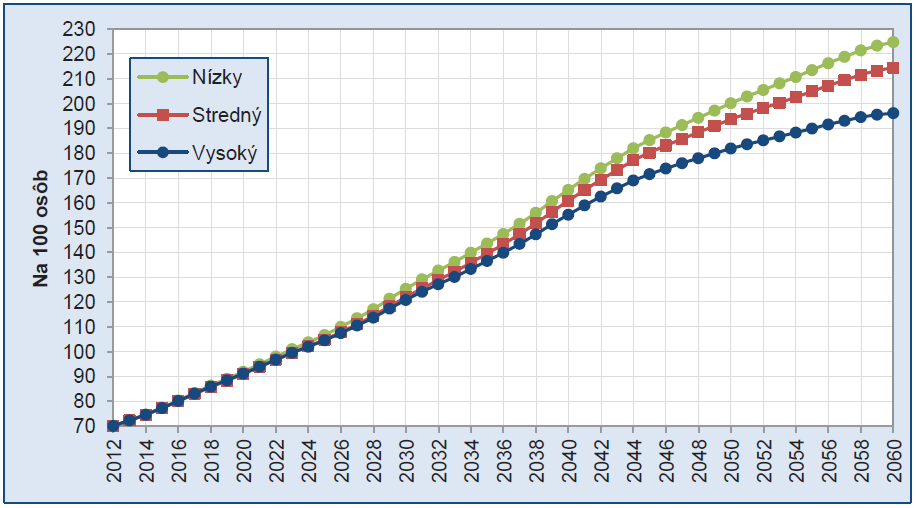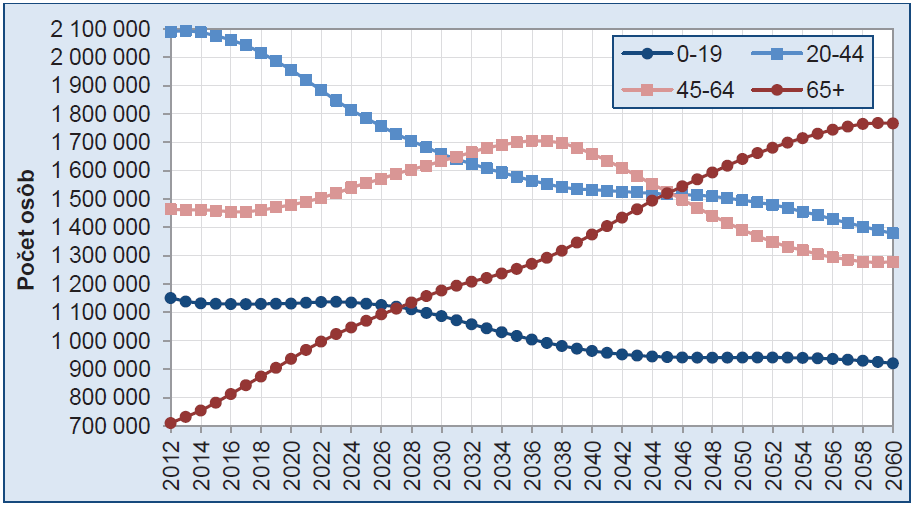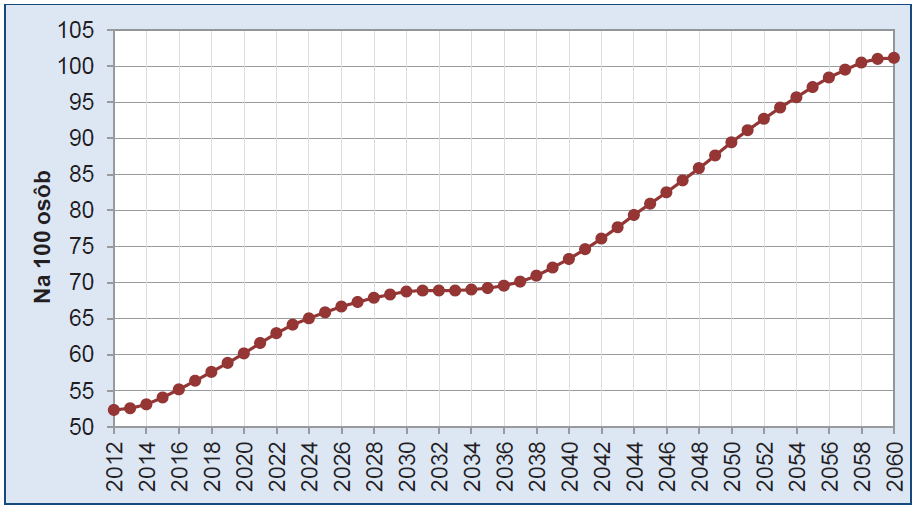Population aging is a concept that is one of the most frequently issue discussed in the press, in politicians´ speeches as well as issue discussed in everyday conversations of ordinary citizens.
The National Programme for Active Ageing notes that while the EU will be missing 15 % of the workforce due to the ageing of the population in 20150, Slovakia will lack up to 21 % of the workforce.
The Slovak Republic will grow older and there is a well-founded assumption that it will also be less numerous and ethnically poorer.
Aging population will result in a number of significant changes in the state administration and politics that will include the changes to the content of political programmes (the age structure of the population dramatically changes and the political views of older workers will be a key to success) and changes in the pension and healthcare systems as well as in the perception of the role of lifelong education and learning.
Expressed the above mentioned numerically, based on the data of the INFOSTAT, the Demographic Research Centre – Institute of Informatics and Statistics, the average age of the population of Slovakia following the mean forecast scenarios will increase from the current 40,2 years (2016) to more than 49 years in 2060.
The rapidly aging population in Slovakia is also expressed in the aging index itself. This index represents the ratio between the number of persons in post-productive age (65+) and those in the pre-reproductive age (0-14 years old).
Graph No. 1: The prognosis of the aging index in Slovakia up to year of 2060

Source: INFOSTAT – Institute of Informatics and Statistics
While in 2016, for 100 people in the pre-productive age accounted around 80 people in the post-productive age, in the age of 2060 based on the mean forecast scenarios for every 100 people in pre-productive age will account around 215 persons in the post-productive age.
“The biggest changes in numbers of population can be expected with the oldest population. All the baby-boomers born in the second half of the 20th century will gradually become older than 64 years. From the least numerous group of the population in 2011, these baby-boomers will become the most numerous group around the year of 2045. The increase in the group of seniors aged 65+ will grow by more than 1 million people in the upcoming five decades, which is about 2, 5 times more compared to 2011. This means that by the year of 2060 there will be every third inhabitant of the Slovak Republic 65 or more years old.” (INFOSTAT, 2013).
Graph No. 2: Medium variant of the expected development of population by major age groups in Slovakia in the year of 2060

Source: INFOSTAT – Institute of Informatics and Statistics
Therefore, while the numerical representation of all age groups will decline, age group of 65 and over will rise steadily.
Economic Dependency Ratio is considered one of the key arguments for an immediate increase in the priority of addressing issues related to aging and its complex impact on the Slovak Republic as a whole.
As INFOSTAT further states, “by the year of 2060, the Economy Dependency Ratio will increase almost twofold. While in 2011, this ratio was as following: for 100 persons of the working age population (20 – 64 years) accounted 52 persons from pre and post productive population (aged under 19 or over 65 years of age). However, at the end of the forecast period it is estimated that there will be more people in the post-productive age group than in the productive age working population group. Specifically, in 2060, for 100 persons of the working age population would account 101, 2 persons in the post-productive age.
Graph No. 3: Medium variant of Economic Dependency Ratio – expected prognosis in Slovakia by the year of 2060

Source: INFOSTAT – Institute of Informatics and Statistics
If the productivity of the labour market is to ensure sufficient funds for sustainable operation of the whole system, it is necessary for the state to respond to these changes as soon as possible to ensure systematic transformation. Some experts say that due to the fact that fewer children are born, we need to build more hospitals than schools. Our organization is not in line with this argument. On the contrary, we incline to the view that schools will gradually have to develop their own teaching specialization and significantly enhance their andragogical competences and other adult education aspects as the essential part of lifelong learning, which will be a key instrument for the transformation of the whole society. We perceive person who works and is an active learner as an effective and conscious member of a society. Moreover, a healthy, active older person is much more effective and economical alternative for society than his or her passive opposition. This brings us to the fact that the stereotypes on both sides of the age spectrum will have to be changed so that they will gradually disappear. The perception of old age, which has historically been associated with life in retirement and as a period of well-deserved rest, needs to be gradually eradicated.
National document RIS 3 SK refers to European Commission projections which assume “that the contribution of the population size and resources of labour force to the economic growth will become increasingly smaller and after the year of 2030, this will become rather negative factor for the economic growth. The entire increase in grow domestic product (and hence funding source for state social services) should exclusively provide new technologies and forms of work organization.” (RIS3 SK, 2013). Indeed, we can conclude and agree that currently, we do not see many options to help us to ensure open future. However, we do emphasize, that increase in GDP itself cannot be the purpose of all these conceptual interventions cannot. The main purpose is mainly the variety of opportunities that the economic growth provides to the society.

